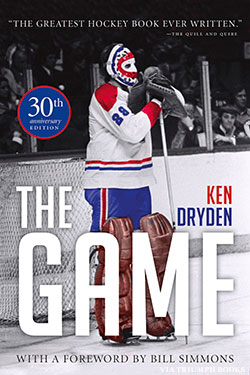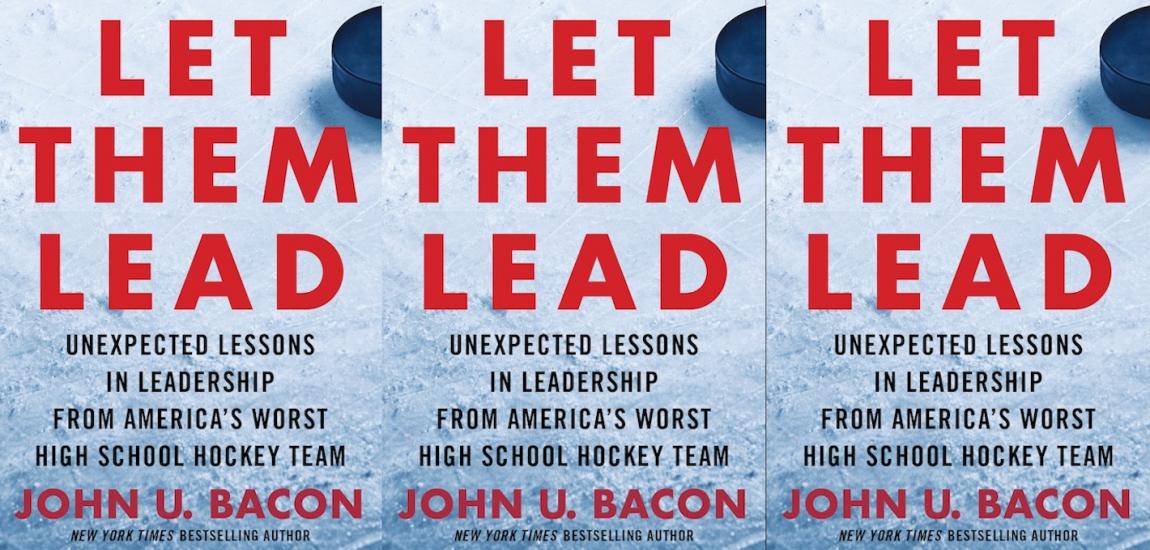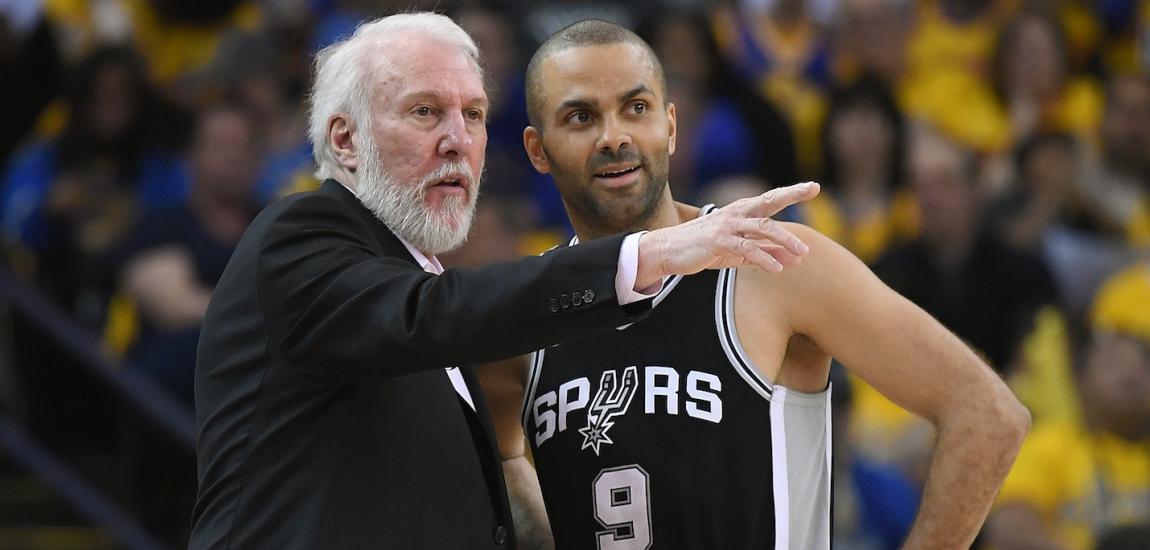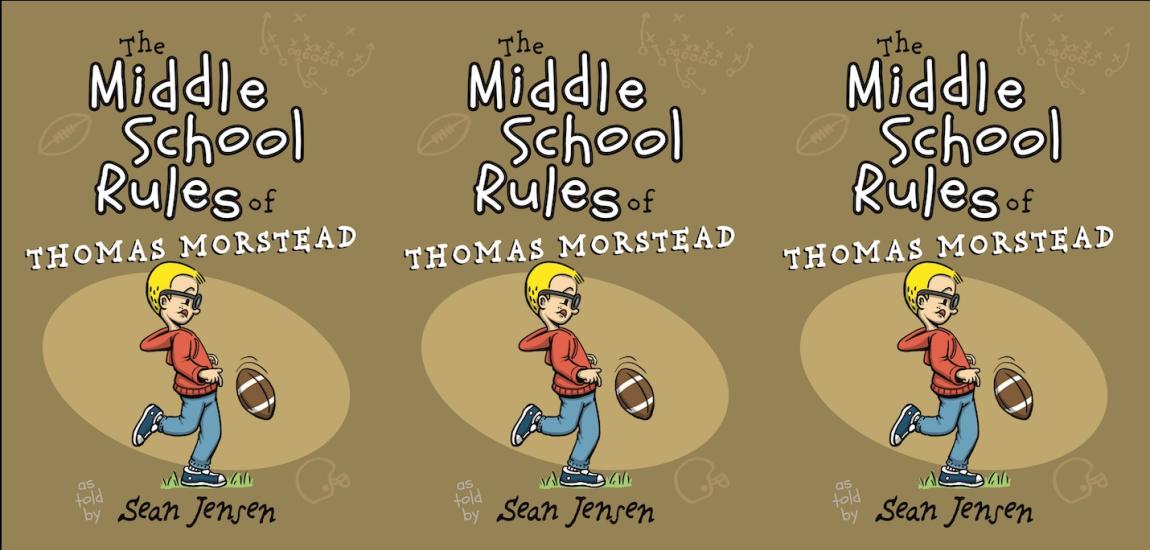Widely acknowledged as the best hockey book ever written and lauded by Sports Illustrated as one of the Top 10 Sports Books of All Time, The Game is a reflective and thought-provoking look at a life in hockey. Ken Dryden, the former Montreal Canadiens goalie and former president of the Toronto Maple Leafs, captures the essence of the sport and what it means to all hockey fans. Originally published in 1983, The Game was re-released with a 30th anniversary publication, including a new foreword by Bill Simmons, new photography and a new chapter, "The Game Goes On." Here is an excerpt.
The Canadian game of hockey was weaned on long northern winters uncluttered by things to do. It grew up on ponds and rivers, in big open spaces, unorganized, often solitary, only occasionally moved into arenas for practices or games. In recent generations, that has changed. Canadians have moved from farms and towns to cities and suburbs; they've discovered skis, snowmobiles, and southern vacations; they've civilized winter and moved it indoors. A game we once played on rivers and ponds, later on streets and driveways and in backyards, we now play in arenas, in full team uniform, with coaches and referees, or to an ever-increasing extent we don't play at all. For, once a game is organized, unorganized games seem a wasteful use of time; and once a game moves indoors, it won't move outdoors again. Hockey has become suburbanized, and as part of our suburban middle-class culture, it has changed.
Put in uniform at six or seven, by the time a boy reaches the NHL, he is a veteran of close to 1,000 games -- thirty-minute games, later thirty-two-, then forty-five-, finally sixty-minute games, played more than twice a week, more than seventy times a year between late September and late March. It is more games from a younger age, over a longer season than ever before. But it is less hockey than ever before.
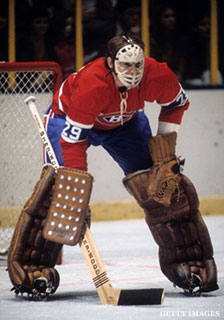
For every time a twelve-year-old boy plays a thirty-minute game, sharing the ice with teammates, he plays only about ten minutes. And ten minutes a game, anticipated and prepared for all day, travelled to and from, dressed and undressed for, means ten minutes of hockey a day, more than two days a week, more than seventy days a hockey season. And every day that a twelve-year-old plays only ten minutes, he doesn't play two hours on a backyard rink, or longer on school or playground rinks during weekends and holidays.
It all has to do with the way we look at free time. Constantly pre-occupied with time and keeping ourselves busy (we have come to answer the ritual question, "How are you?" with what we apparently equate with good health, "Busy"), we treat non-school, non-sleeping or non-eating time, unbudgeted free time, with suspicion and no little fear. For while it may offer opportunity to learn and do new things, we worry that the time we once spent reading, kicking a ball, or mindlessly coddling a puck might be used destructively, in front of TV, or "getting into trouble" in endless ways. So we organize free time, scheduling it into lessons -- ballet, piano, French -- into organizations, teams, and clubs, fragmenting it into impossible-to-be-boring segments, creating in ourselves a mental metabolism geared to moving on, making free time distinctly unfree.
It is in free time that the special player develops, not in the competitive expedience of games, in hour-long practices once a week, in mechanical devotion to packaged, processed, coaching-manual, hockey-school skills. For while skills are necessary, setting out as they do the limits of anything, more is needed to transform those skills into some- thing special. Mostly it is time unencumbered, 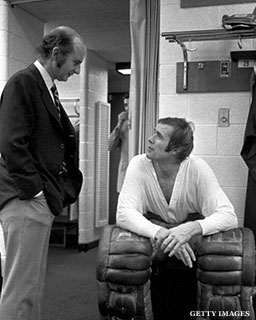 unhurried, time of a different quality, more time, time to find wrong answers to find a few that are right; time to find your own right answers; time for skills to be practiced to set higher limits, to settle and assimilate and become fully and completely yours, to organize and combine with other skills comfortably and easily in some uniquely personal way, then to be set loose, trusted, to find new instinctive directions to take, to create.
unhurried, time of a different quality, more time, time to find wrong answers to find a few that are right; time to find your own right answers; time for skills to be practiced to set higher limits, to settle and assimilate and become fully and completely yours, to organize and combine with other skills comfortably and easily in some uniquely personal way, then to be set loose, trusted, to find new instinctive directions to take, to create.
But without such time a player is like a student cramming for exams. His skills are like answers memorized by his body, specific, limited to what is expected, random and separate, with no overviews to organize and bring them together. And for those times when more is demanded, when new unexpected circumstances come up, when answers are asked for things you've never learned, when you must intuit and piece together what you already know to find new answers, memorizing isn't enough. It’s the difference between knowledge and understanding, between a super-achiever and a wise old man. And it’s the difference between a modern suburban player and a player like Lafleur.
For a special player has spent time with his game. On backyard rinks, in local arenas, in time alone and with others, time without short-cuts, he has seen many things, he has done many things, he has experienced the game. He understands it. There is scope and culture in his game. He is not a born player. What he has is not a gift, random and otherworldly, and unearned. There is surely something in his genetic make-up that allows him to be great, but just as surely there are others like him who fall short. He is, instead, a natural.
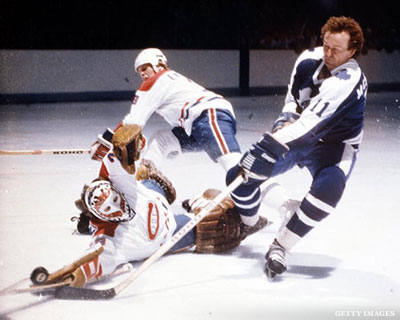
"Muscle memory" is a phrase physiologists sometimes use. It means that for many movements we make, our muscles move with no message from the brain telling them to move, that stored in the muscles is a learned capacity to move a certain way, and, given stimulus from the spinal cord, they move that way. We see a note on a sheet of music, our fingers move; no thought, no direction, and because one step of the transaction is eliminated -- the information-message loop through the brain -- we move faster as well.
When first learning a game, a player thinks through every step of what he's doing, needing to direct his body the way he wants it to go. With practice, with repetition, movements get memorized, speeding up, growing surer, gradually becoming part of the muscle’s memory. The great player, having seen and done more things, more different and personal things, has in his muscles the memory of more notes, more combinations and patterns of notes, played in more different ways. Faced with a situation, his body responds. Faced with something more, something new, it finds an answer he didn't know was there. He invents the game.
Listen to a great player describe what he does. Ask Lafleur or Orr, ask Reggie Jackson, O. J. Simpson, or Julius Erving what makes them special, and you will get back something frustratingly unrewarding. They are inarticulate jocks, we decide, but in fact they can know no better than we do. For ask yourself how you walk, how your fingers move on a piano keyboard, how you do any number of things you have made routine, and you will know why.
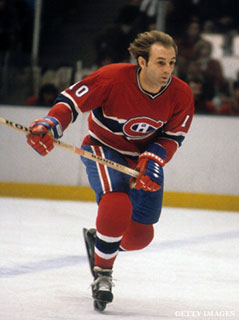
Stepping outside yourself you can think about it and decide what must happen, but you possess no inside story, no great insight unavailable to those who watch. Such movement comes literally from your body, bypassing your brain, leaving few subjective hints behind. Your legs, your fingers move, that's all you know. So if you want to know what makes Orr or Lafleur special, watch their bodies, fluent and articulate. Let them explain. They know.
When I watch a modern suburban player, I feel the same as I do when I hear Donnie Osmond or René Simard sing a love song. I hear a skillful voice, I see closed eyes and pleading outstretched fingers, but I hear and see only fourteen-year-old boys who can't tell me anything.
Hockey has left the river and will never return. But like the "street," like an "ivory tower," the river is less a physical place than an attitude, a metaphor for unstructured, unorganized time alone. And if the game no longer needs the place, it needs the attitude. It is the rare player like Lafleur who reminds us.
-- Excerpted by permission from The Game: 30th Anniversary Edition by Ken Dryden. Copyright (c) 1983, 2003 by Ken Dryden. Published by Triumph Books. All rights reserved. No part of this excerpt may be reproduced or reprinted without permission in writing from the publisher. Available for purchase from the publisher, Amazon, Barnes & Noble and iTunes.

